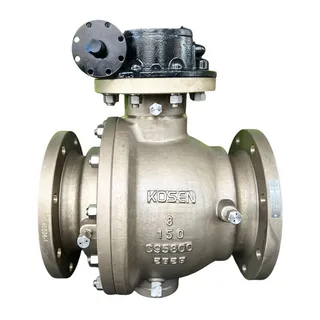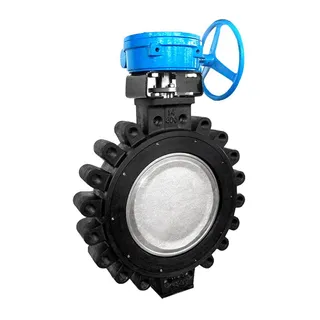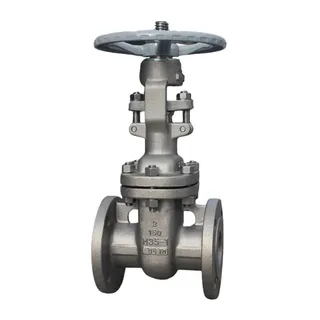In industrial production, check valves are indispensable equipment that can effectively prevent backflow of the medium, protecting the safety and operation of piping systems and equipment. However, faced with a wide variety of check valves, how to correctly select the appropriate model and internal design is a major challenge for many engineers and technical personnel. This article will provide a detailed introduction to the common types of check valves, internal designs, and key selection points, helping you make informed choices in practical applications.
Check valves can be divided into multiple types according to their structure and working principle, each with unique characteristics and suitable applications.
Lift check valves operate by the disc sliding along the vertical centerline of the valve body to open and close. The internal designs of this type of valve mainly include flat plate, plug, and spherical discs, each further divided into versions with or without return springs.
Flat Plate Disc: Flat plate discs have a simple structure and relatively low manufacturing cost, but their sealing performance is relatively poor. They mainly rely on the medium's own pressure to form a sealing contact, so they can be used in situations where sealing requirements are not high. However, because their sealing performance is not as good as spherical discs, they are generally determined by the manufacturer according to custom and do not need to be specially noted in the valve material list.
Plug Disc: Plug discs are similar to flat plate discs and also rely on the medium's own pressure to form a seal. Their sealing performance is slightly better than that of flat plate discs, but still inferior to spherical discs. Plug discs also do not need to be specially noted in the valve material list and are usually provided by the manufacturer in the default type.
Spherical Disc:Spherical discs have the best sealing performance because they can better fit the valve seat and form a tighter seal. This type of disc is commonly used in applications with high internal leakage requirements, such as conditions involving extremely hazardous media. However, spherical discs are more expensive, so selection requires balancing cost and sealing performance according to actual needs.
Swing check valves have a disc that rotates around a hinge pin outside the valve seat. The internal designs can be divided into conventional discs and TILTING (tilting disc) types.
Conventional Disc: The conventional disc is the manufacturer's default type and is suitable for most ordinary conditions. It has a simple structure, is easy to operate, and can meet general check requirements.
Tilting Disc: The Tilting disc uses the balancing effect of the sub-disc to provide a certain delay during valve opening or closing, greatly reducing the impact on the valve seat. This type of disc is suitable for special conditions, such as liquid pipelines DN400 and above, gas pipelines Class 300 and above with DN400+, and media conditions with frequent pressure fluctuations where the valve diameter is DN200 or larger. If a TILTING disc is required, it should be noted in the valve material list.
Wafer check valves have disc designs including axial flow, swing, and dual-plate types.
Axial Flow Disc: Axial flow discs are commonly used in check valves DN40 and below and feature spring return. Their structure is simple, but the disc occupies a large portion of the forward flow channel, making it unsuitable for large-diameter and high-pressure media conditions.
Swing Disc: Swing discs, also called single-disc valves, do not require a spring return and are commonly used for wafer check valves with diameters DN25–200. Compared with dual-plate discs, swing discs have a simpler structure, and the disc avoids the middle of the flow path, providing better fluid flow characteristics. However, for large-diameter valves, the disc may extend into the pipeline flange after opening, so the adaptation to the flange channel space must be considered.
Dual-Plate Disc: Dual-plate discs are commonly used in wafer check valves DN50 and above. They overcome the potential collision issues of swing discs with pipeline flanges, making them the default type for most manufacturers. If a dual-plate disc is selected, it is recommended to note it in the valve material list.
Correct selection of check valves not only ensures effective backflow prevention but also extends valve service life and reduces equipment failures. The following are key factors to consider during selection.
When selecting a check valve, the characteristics of the medium must first be considered, including type, temperature, pressure, viscosity, and the presence of solid particles. Different media have different requirements for valve materials and structures.
Medium Type: Check valves are suitable for various media, such as water, steam, gas, corrosive media, oils, and chemicals. Selecting the appropriate body and sealing material based on chemical properties is crucial. For example, for corrosive media, corrosion-resistant materials such as stainless steel or PTFE should be chosen.
Medium Temperature: The operating temperature range of the medium is also important. The applicable temperature range of check valves is generally between -196℃ and 800℃, but different types and materials have specific limits. For example, diaphragm check valves typically suit -12℃ to 120℃, while spherical check valves operate between -101℃ and 150℃.
Medium Pressure: Operating pressure of the medium is a necessary factor. Different check valve types and internal designs have varying adaptability. For example, swing check valves can withstand higher pressures up to PN42 MPa, whereas diaphragm check valves are generally limited to 1.6 MPa.
Medium Viscosity and Solid Particles: Check valves are generally suitable for clean media and should not be used with media containing solid particles or high viscosity. Presence of solids may cause blockage or wear, affecting normal operation. Therefore, when selecting check valves, avoid using them on pipelines with solid-containing media whenever possible.
Pipeline diameter, installation position, and flow direction also affect check valve selection.
Pipeline Diameter: Different diameters suit different types of check valves. For high-pressure valves DN≤50 mm, vertical lift or straight lift check valves are recommended; for low-pressure valves of the same diameter, butterfly, vertical lift, or diaphragm check valves are suitable. High-pressure valves DN>50 mm and <600 mm should use swing check valves; medium- and low-pressure valves DN>200 mm and <1200 mm are suitable for non-wearing spherical check valves; low-pressure valves DN>50 mm and <2000 mm can use butterfly or diaphragm check valves.
Installation Position: Installation position also impacts selection. Lift check valves generally suit horizontal pipelines; vertical lift check valves are for vertical pipelines; swing check valves can be installed in horizontal, vertical, or inclined pipelines; butterfly and diaphragm valves can also be installed in horizontal or vertical pipelines.
Medium Flow Direction: Flow direction must be considered. For example, swing check valves in vertical pipelines should have flow from bottom to top. For pump inlet lines, foot valves are recommended, installed only in vertical pipelines with flow from bottom to top.
The importance of the protected equipment and its sensitivity to backflow should be considered.
Equipment Importance: For equipment requiring rapid closure at the outlet, return springs can assist in quickly closing the valve when medium pressure drops, preventing damage from backflow. However, in low-pressure conditions, springs increase resistance, reduce flow, or may prevent valve opening. When selecting return springs, it is necessary to carefully consider the medium pressure or specify valve opening pressure in the material list.
Sensitivity to Backflow: If the protected equipment is sensitive to backflow, a fast-closing valve disc type should be chosen, such as lift or TILTING swing check valves. For applications where closure speed is not critical, conventional swing or butterfly check valves are acceptable.
Closing speed is another important factor, especially for incompressible and compressible fluids.
Incompressible Fluids: For incompressible fluids, the required closing speed should first be evaluated. Based on this, select a check valve that meets the required closing speed. For example, if rapid closure is needed to prevent water hammer, lift check valves with return springs or TILTING swing check valves can be used.
Compressible Fluids: For compressible fluids, similar methods to incompressible fluids can be applied. If medium flow fluctuates widely, a deceleration device may control closing speed. For continuously fast stopping and starting flows, such as compressor outlets, lift check valves are recommended due to better adaptability to rapid flow changes.
Proper installation is crucial for normal operation and extending service life.
Check valves must be installed correctly to ensure smooth flow and prevent backflow. Before installation, check the flow direction markings and ensure flow matches the valve's opening direction. For swing check valves in vertical pipelines, flow should be from bottom to top. Butterfly and diaphragm valves can be installed horizontally or vertically, but the flow direction must align with the opening direction.
The valve should be installed in locations convenient for operation and maintenance. Lift check valves suit horizontal pipelines; vertical lift check valves suit vertical pipelines. Ensure sufficient space around the valve for inspection and maintenance. Avoid locations exposed to impact or vibration.
Connections must be firm and leak-proof. Use appropriate sealing materials and correct installation steps. For large-diameter valves, ensure adequate support to prevent weight from stressing the valve and affecting sealing performance.
Since check valves are generally for clean media, appropriate filters should be installed upstream to remove solids and debris. This extends valve life and improves system efficiency and safety.
Check valves play an important role in industrial production. Correct selection and installation are critical to ensure safe operation of piping systems. When selecting a check valve, comprehensive consideration should be given to medium characteristics, pipeline conditions, equipment requirements, and closing speed, to choose the appropriate type and internal design. During installation, attention should be paid to installation direction, position, pipeline connection, and medium filtration to ensure normal operation. Through proper selection, correct installation, and regular maintenance, the full function of check valves can be realized, providing reliable protection for industrial production.
This article aims to assist in the selection and application of check valves. For further questions or technical support, consult relevant professionals.



